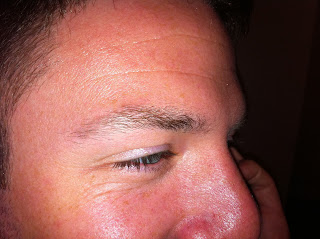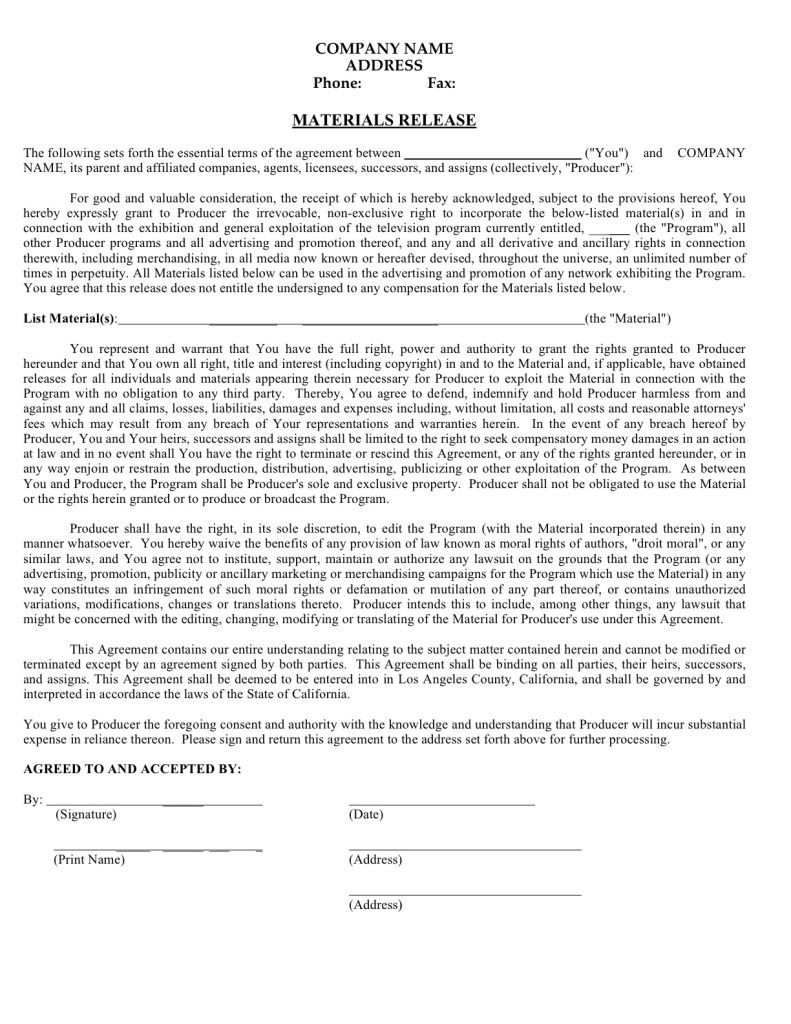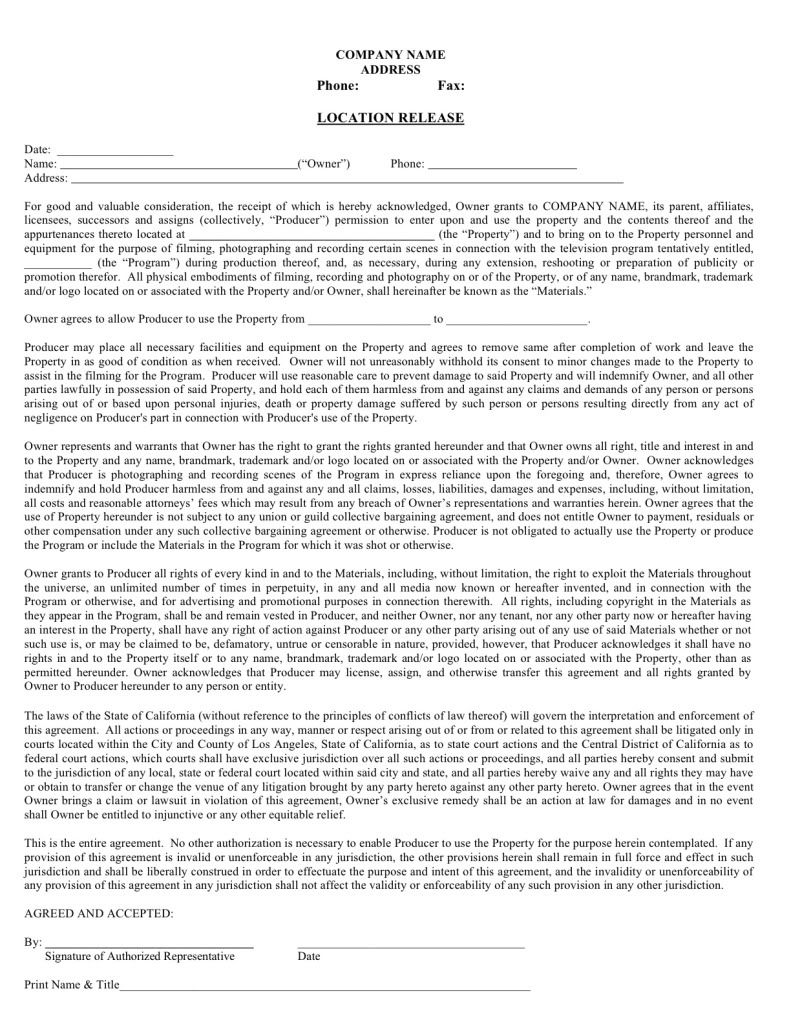Above is an example of what's known as a Wide Area Release. When shooting in a public place, theater, or anywhere there will be a large group of people, you will need to use a wide area release. These should be made into posters that are about three feet tall, posted at every entrance to the location, and you'll need to have the camera crew get shots of all the signs, showing where they are posted.
For more info on wide area releases, I contacted a friend who works as legal consult to reality productions, and she had this to say:
In public places they cover people passing by in the background. If people are focused on or lingering in the background they need to be individually released. For audiences, they generally cover everybody although we still try to individually clear people we focus on for long periods of time and definitely for anybody with whom we interact. For employees, or others that don't have a choice to leave the area, they in general need to be released.
Thursday, September 29, 2011
Wednesday, September 28, 2011
Stanford Film School
New Challenges for Documentary: Second Edition by Alan Rosenthal
Introduction to Documentary: Second Edition by Bill Nichols
Directing the Documentary: Fifth Edition by Michael Rabiger
Documentary Storytelling: Creative Nonfiction on Screen: Third Edition by Sheila Curran Bernard
Tuesday, September 27, 2011
How to Shoot a Phone Conversation
Shooting a phone conversation for reality television is an art unto itself. It's not enough to just point the camera, we need options in the editing bay. More often than not, a phone call will last long enough to get plenty of different angles for us to play with, but even short calls will need to be edited down. So, if you don't get enough time to grab different angles during the actual call, have your subject listen or pretend to still be on the call for a couple minutes afterward while you shoot different cutaway angles. Here are some examples:
This is your basic master shot of a subject talking on the phone. This shot and maybe a little tighter medium close up are usually what you see in post from an average field producer. A GREAT field producer will take the time to make sure we have other angles to cover this conversation, understanding that we will need to edit this phone call down and spice it up.
So, a helpful shot might be a super wide...
I'd probably begin and end a scene with this shot and use the closer shots for the more emotional parts of the call. This is also not a bad shot for covering bites. It can also be very effective if the overall feeling of the scene needs to convey a character's loneliness. Ask your subject to answer and hang up the phone in this shot, if you're shooting it as a pickup. Here's another:
Especially if the scene was emotional, you may get a super close pickup shot like this:
Just the eyes, again make sure to get a few different reactions. And shoot them talking AND listening.
If your subject was talking on speakerphone instead of holding the phone up to his ear, make sure to get a cutaway of just the phone. Like this:
These different shots and cutaways only take a few minutes and can make A HUGE DIFFERENCE between a boring, static phone conversation and an exciting piece of television magic. It also gives the editor freedom to construct the most effective phone conversation to serve the story.
This is your basic master shot of a subject talking on the phone. This shot and maybe a little tighter medium close up are usually what you see in post from an average field producer. A GREAT field producer will take the time to make sure we have other angles to cover this conversation, understanding that we will need to edit this phone call down and spice it up.
So, a helpful shot might be a super wide...
I'd probably begin and end a scene with this shot and use the closer shots for the more emotional parts of the call. This is also not a bad shot for covering bites. It can also be very effective if the overall feeling of the scene needs to convey a character's loneliness. Ask your subject to answer and hang up the phone in this shot, if you're shooting it as a pickup. Here's another:
This is an extremely helpful shot for editing a conversation. Why? Because I can't see his mouth. I can cover any part of the conversation with this shot. If you're shooting this as a pickup after the actual phone call, make sure to have your subject listen AND talk in this shot. Even though I can't see his mouth move, I can still tell whether or not he's talking based on cheek and jaw movement.
Here's a great cutaway:
This is what we call "talking hands." It's a close up of your subject's free hand, gesturing as if he is talking. Based on whatever the phone call was, you might have your subject make angry gestures, happy gestures, explainy gestures, etc. Especially if the scene was emotional, you may get a super close pickup shot like this:
Just the eyes, again make sure to get a few different reactions. And shoot them talking AND listening.
If your subject was talking on speakerphone instead of holding the phone up to his ear, make sure to get a cutaway of just the phone. Like this:
Monday, September 26, 2011
hello again
Sorry for my absence on this blog the last few weeks. Besides for my day job, I have been spending nights cutting the DVD special features for the upcoming horror/thriller Donner Pass. Look for it in January 2012!
Thursday, September 8, 2011
Standard Appearance Release
Bringing up the rear of this release parade is the most important of all, the appearance release. This gives you permission to use a person's likeness and voice in your show and you should try to never shoot anyone who hasn't already signed one of these. Anyone who's face appears onscreen must sign an appearance release or they will have to be blurred, including random people walking by in the background. Also worth noting is that subjects MUST BE SOBER when signing the release for it to be valid, or else they can sue you even if you have the release.
Usually during a shoot on the street, PA's help wrangle folks away from the camera, or intercept the ones who already walked through a shot to get them to sign a release. So, an average show has hundreds of appearance releases, especially if there are scenes that take place in public, at a club, etc. They need to be kept track of for a clearance coordinator to watch the cut and make sure everyone is released. Best thing to do is write a large bold number on the back of every release beforehand, starting with 001 and going up from there. After each person signs their release, have them hold up the side that has the number on it and take a digital picture of them. This way, the number can be matched to the release and thus the release can be matched to the person in the footage. If you have an iPad, there is an app for this so people can sign on the screen and you can just take a picture with the iPad's camera.
Here is a standard appearance release:
Tuesday, September 6, 2011
Standard Materials Release
Much like locations, photos and visual elements you wish to use in your show must be released before airing. This would include artwork in the background, maps, archival photos, album and magazine covers, etc. And it especially goes for any photos you want to use full frame or things like Billboard music charts that you often see on shows.
If you don't have permission to use these images and you can't cut around them, you will have to blur them in post. This can be a nightmare if, say, your characters are having an important conversation while standing in front of a decorative poster. A good field producer will remove any troublesome decorations from a location before shooting there, and a great producer will even clear images through Getty or another image library and decorate locations with already cleared images.
In the case of any artwork, this must be signed by the creator or rights holder, regardless of who currently owns the physical piece.
Here is a standard materials release:
Click here to download Materials Release as a word doc
If you don't have permission to use these images and you can't cut around them, you will have to blur them in post. This can be a nightmare if, say, your characters are having an important conversation while standing in front of a decorative poster. A good field producer will remove any troublesome decorations from a location before shooting there, and a great producer will even clear images through Getty or another image library and decorate locations with already cleared images.
In the case of any artwork, this must be signed by the creator or rights holder, regardless of who currently owns the physical piece.
Here is a standard materials release:
Click here to download Materials Release as a word doc
Sunday, September 4, 2011
SUNDAY QUICK TIP
When interviewing a subject about multiple episodes, it's good to slate the different portions of the interview. Hold up a sheet of paper with the episode number written on it in large, bold letters and hold it there for at least ten seconds. This way, story producers can find the relevant portions of the interview simply by scrubbing through the footage. This is especially helpful on pickup interviews with tight deadlines, when they can't wait for transcriptions or watching the entire tapes down.
Friday, September 2, 2011
Standard Location Release form
Many people don't realize that, like any scripted show, reality TV shows can't shoot just anywhere. You need explicit legal permission before anything airs, which really means you shouldn't bother shooting anywhere you don't have that permission already. Even if you just want to show the exterior and then match it to a different interior, you still must have permission. Below is a standard location release form that can be used to obtain permission to shoot at a location and use its image, and it must be signed by the location's owner.
Thursday, September 1, 2011
"In scripted television, it is easier to pick an angle, since they shoot coverage for everything. But, in our case, we don't have cutaways. If a contestant says something brilliant, but it takes two minutes and I have to cut that down, I don't have a cutaway. I have to steal a cutaway by going over to a dancer, or something along those lines. This type of work is hard to do because you have no coverage and no script. So we are always making something from scratch."--Pamela Malouf, Dancing With the Stars editor in the Sept/Oct 2011 issue of Editors Guild Magazine
Subscribe to:
Comments (Atom)












